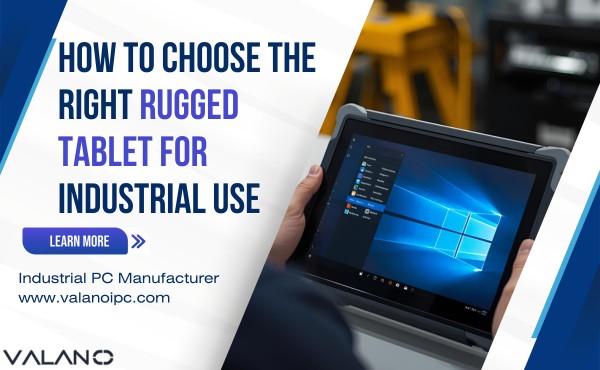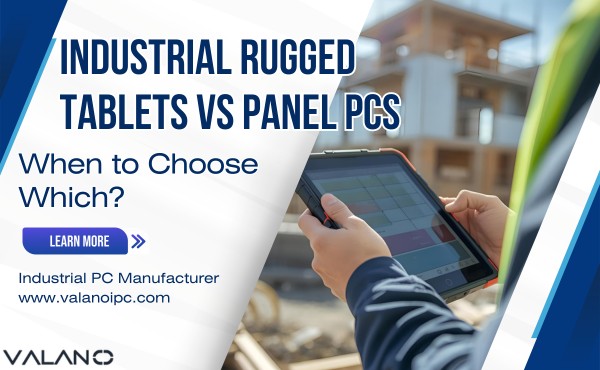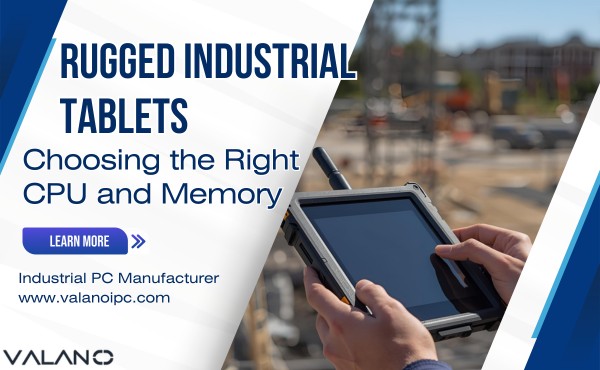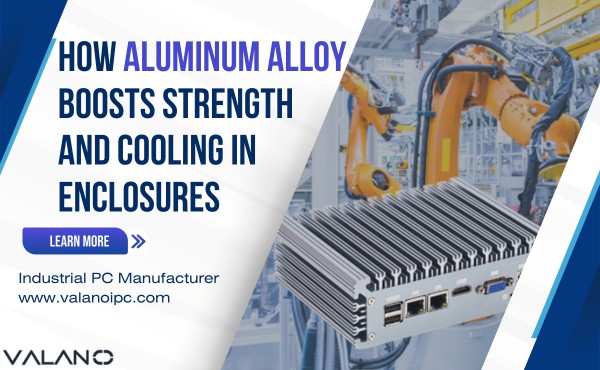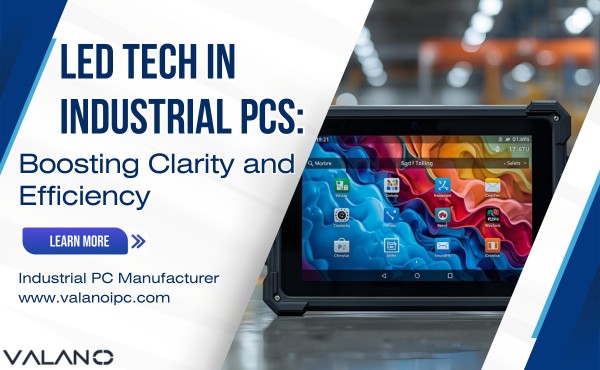An embedded box computer is a compact device designed to perform specific tasks within larger systems. Unlike regular computers, an embedded box computer features rugged construction and operates reliably in tough industrial environments. These embedded solutions use sturdy casings and support continuous operation where durability and space-saving design matter most.
Embedded box computers stand out because they handle extreme temperatures, resist dust, and fit easily into machinery used in factories and commercial spaces.
Embedded Box Computer Overview
Key Characteristics
An embedded box computer stands out for its compact size and specialized design. Engineers build these devices to fit into tight spaces and perform dedicated tasks. Most industrial embedded box pc models use metal or aluminum cases to protect sensitive components.
Industrial embedded box pc units often feature fanless cooling systems. This design reduces dust intake and increases reliability. Embedded computers also support a wide range of input and output options, making them flexible for different industrial uses.
Embedded computers operate quietly and efficiently. Many industrial embedded box pc models run on low-power processors, which helps save energy in factories and commercial settings.
A typical industrial box pc supports continuous operation. These box pc devices rarely need maintenance and can work for years without interruption. Embedded computers also offer easy integration with sensors, controllers, and other equipment.
| Feature | Description |
|---|---|
| Size | Small and space-saving |
| Cooling | Fanless, dust-resistant |
| Power Efficiency | Low energy consumption |
| Connectivity | Multiple I/O ports |
| Reliability | Designed for 24/7 operation |
Rugged Design
Industrial embedded box pc uses rugged construction to survive harsh environments. Manufacturers test these embedded computers for resistance to extreme temperatures, moisture, and vibration. The sturdy casing shields the internal parts from damage.
Rugged embedded computers can operate in places where regular computers would fail. Industrial embedded box pc models often work in factories, transportation hubs, and outdoor installations. These box pc units handle shocks and bumps without losing performance.
Many industrial embedded box pc devices meet strict industry standards for durability. This makes them ideal for mission-critical tasks in industrial automation and control.
An industrial box pc offers mounting options for walls, racks, or machinery. This flexibility allows engineers to install embedded computers wherever needed. The robust design ensures that each industrial computer delivers reliable performance in challenging conditions.
Industrial Embedded Box PC Features
Environmental Tolerance
Industrial embedded box pc systems show strong resistance to harsh conditions. Engineers design embedded computers to work in places with extreme temperatures, dust, and moisture. These devices often operate in factories, outdoor installations, and transportation hubs.
Many industrial embedded computers use sealed casings. This protects sensitive parts from water and dirt. Vibration and shock resistance help embedded computers maintain stable processing in busy industrial environments.
Embedded computers support reliable performance even when exposed to constant movement or sudden impacts.
This makes them ideal for industrial automation and control tasks.
A typical box pc can run in high humidity or freezing cold. These features allow industrial embedded box pc units to deliver consistent efficiency in many settings.
| Environmental Challenge | Embedded Solution |
|---|---|
| Extreme Temperature | Wide operating range |
| Dust | Sealed casing |
| Moisture | Water-resistant design |
| Vibration | Shock-absorbing mounts |
Energy Efficiency
Industrial embedded box pc models focus on energy efficiency. Many embedded computers use low-power processors to reduce electricity use. Fanless designs help save energy and lower maintenance needs.
Energy efficiency matters in industrial settings. Factories and commercial spaces often run embedded computers 24/7. Efficient processing means less heat and longer device life.
Engineers choose embedded computers for their ability to balance performance and efficiency.
This helps companies lower costs and improve sustainability.
Box pc units often support smart power management. These features allow industrial embedded computers to adjust energy use based on workload. Efficient embedded computers help businesses meet environmental goals.
How Embedded Computers Work
Operation in Harsh Environments
Embedded computers perform well in places where regular computers cannot survive. Engineers design these devices to handle dust, moisture, and extreme temperatures. Many embedded computers use a fanless design, which keeps out dirt and reduces moving parts.
A fanless system also helps embedded computers run quietly. These devices often work around the clock, providing 24/7 operation in factories or outdoor locations. The sturdy casing protects the electronics from shocks and vibrations.
Embedded computers keep working even when conditions change quickly. This reliability makes them a top choice for industrial automation and control.
Integration in Systems
Engineers often install embedded computers directly into larger machines or equipment. These devices act as the brains of the system, controlling processes and collecting data. Embedded computers can connect to sensors, controllers, and other devices through multiple ports.
Mounting options include wall, rack, or DIN-rail installation. This flexibility allows embedded computers to fit into many types of systems. Once installed, these computers operate with little human input and can run for years without interruption.
- Embedded computers support:
- Seamless integration with industrial networks
- Real-time monitoring and control
- Easy expansion for future needs
Embedded computers help businesses automate tasks and improve efficiency. Their ability to work alone inside complex systems sets them apart from regular computers.
Applications of Embedded Box Computers
Industrial Automation
Industrial embedded box computers play a key role in automation. Factories use these devices to control robotic arms and monitor production lines. Engineers rely on embedded computers for process control and data collection.
Many industrial environments demand high reliability. Embedded computers must work without interruption. These devices often run 24/7 in manufacturing plants. Their rugged design ensures they can handle complex industrial applications.
In real world applications, embedded box computers help automate tasks and improve safety. They support sensors and controllers that keep machines running smoothly.
Customization is important for industrial settings. Engineers can select features that match specific needs. This flexibility allows embedded computers to fit many types of industrial applications.
| Industrial Application | Embedded Box Computer Role |
|---|---|
| Manufacturing | Controls machinery |
| Process Control | Monitors and adjusts systems |
| Robotics | Manages movement and safety |
Transportation and Retail
Transportation systems depend on embedded box computers for reliability. Trains and buses use these devices to manage passenger information and control signals. Embedded computers withstand vibration and temperature changes in transit environments.
Retail stores use embedded computers for point-of-sale systems and digital signage. These devices process transactions and display information to customers. Reliability is crucial in retail, where downtime can affect sales.
Medical devices also use embedded box computers. Hospitals need reliable systems to monitor patient data and control equipment. Embedded computers support these critical applications with consistent performance.
Embedded box computers offer solutions for many industries. Their reliability and ability to handle complex industrial applications make them valuable in transportation, retail, and healthcare.
Engineers choose embedded computers for their ability to meet specific requirements. These devices adapt to different environments and support a wide range of applications.
How to Choose a Embedded Box Computer
Performance and Expansion
Selecting an embedded box computer starts with understanding the required processing power. Industrial applications often need high-performance processors to handle complex tasks. Improved processing power allows these devices to run advanced software and support real-time data analysis.
Engineers look for flexible expansion options. Many industrial embedded computers offer multiple I/O ports for connecting sensors, controllers, and displays. Expansion slots let users add extra storage or communication modules.
Tip: Always match the computer’s performance and expansion capabilities to the demands of your application.
A table can help compare key factors:
| Factor | Description |
|---|---|
| Processor Type | High-performance processors for demanding tasks |
| I/O Options | Multiple ports for connectivity |
| Expansion Slots | Support for additional modules |
| Storage | Options for SSD or HDD |
Environmental Requirements
Industrial environments present unique challenges. Engineers must consider temperature ranges, humidity, and vibration when choosing embedded computers. Devices with rugged casings and shock-absorbing mounts perform well in harsh conditions.
Mounting options also matter. Wall, rack, or DIN-rail mounts provide flexibility for installation. Customization ensures the computer fits specific industrial needs.
Note: Always check industry standards and certifications before making a selection.
Application-specific requirements guide the final choice. Some industries need water-resistant designs, while others focus on dust protection. Durability and reliability remain top priorities for industrial settings.
Conclusion
An embedded box computer delivers reliable, rugged performance in demanding environments. These devices offer compact size, energy efficiency, and strong resistance to harsh conditions. Their role in industrial and commercial systems remains essential.
When selecting an embedded box computer, users should match features to their specific application needs. Careful consideration ensures the best fit for any project. Engineers and businesses can expect continued innovation in embedded computing. The future holds even more possibilities for smarter, more efficient systems.





